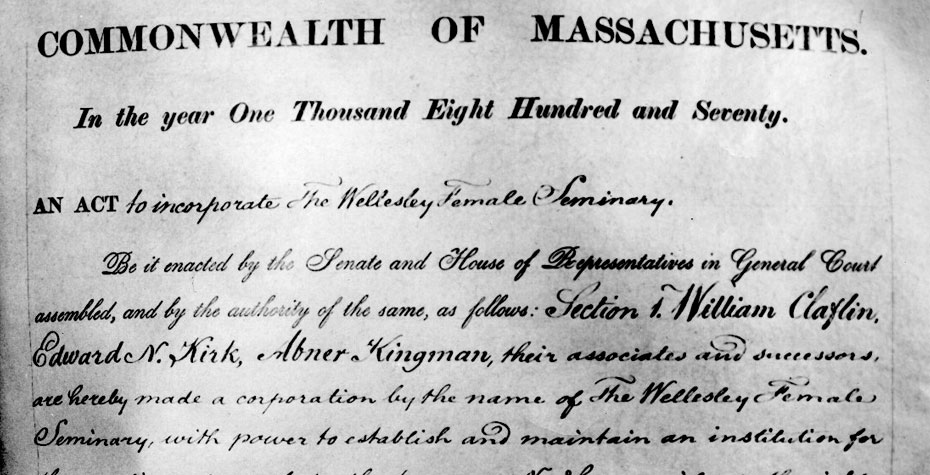Wellesley Swapped the Moniker "Female Seminary" for "College" in 1873

The institution originally envisioned by Pauline and Henry Fowle Durant was called the Wellesley Female Seminary. It was to the Seminary that the Commonwealth of Massachusetts granted a charter in 1870. Three years later on March 7, 1873, the Durants successfully sought to change the name of their institution to Wellesley College.
The word seminary had two meanings, according to The Landscape & Architecture of Wellesley College by Peter Fergusson, et al. The first meaning signified a place that educated women to become teachers. The American Civil War sent many male teachers to the battlefield—some never to return, creating a demand for well-educated women. Many women’s colleges, like Mount Holyoke and Vassar College, were formed in response to this demand.
“A second meaning emerged in the 1860s that was closer to the word college,” explain authors Peter Fergusson, James F. O’Gorman, and John Rhodes. “It addressed women’s determination for liberal learning equivalent to that offered men. At Wellesley the two meanings may be seen in transition."
The Durants were no strangers to name changes. Henry Fowle Durant was born as Henry Welles Smith. According to Wellesley College 1875-1975: A Century of Women by Jean Glasscock, the enterprising young Harvard Law graduate changed his name after meeting 11 Boston lawyers also named Smith. In 1863, the Durants changed the name of the lake on their property from the lackluster-sounding Bullard’s Pond to Lake Waban, waban meaning “wind” in the language of the local Algonquins according to The Landscape & Architecture of Wellesley College.
The Durants chose Wellesley as the name of their institution in part to honor their neighbors, the Horatio Hollis Hunnewells; Mrs. Hunnewell’s maiden name was Welles.
The town around the college was once part of West Needham. It subsequently adopted the name Wellesley in 1881. This fact is somewhat irrelevant to most Wellesley students, who carry on a long-standing tradition of referring to the town as “the Vil.”
Learn more about the college’s early history online or in print, through Wellesley College by Arlene Cohen (Arcadia, 2006), Wellesley College 1875-1975: A Century of Women edited by Jean Glasscock (Wellesley College, 1975), The Landscape & Architecture of Wellesley College by Peter Fergusson, James F. O’Gorman, and John Rhodes, and Alma Mater: Design and Experience in the Women’s Colleges from Their Nineteenth-Century Beginnings by Helen Horowitz Lefkowitz ’63 (University of Massachusetts, 1993).
—Gabrielle Linnell ’13
